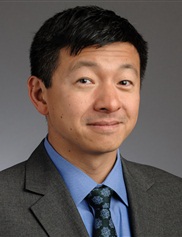Grants We Funded
Grant applicants for the 2023 cycle requested a total of nearly $4 million dollars. The PSF Study Section Subcommittees of Basic & Translational Research and Clinical Research evaluated nearly 140 grant applications on the following topics:
The PSF awarded research grants totaling over $1 million dollars to support nearly 30 plastic surgery research proposals.
ASPS/PSF leadership is committed to continuing to provide high levels of investigator-initiated research support to ensure that plastic surgeons have the needed research resources to be pioneers and innovators in advancing the practice of medicine.
Research Abstracts
Search The PSF database to have easy access to full-text grant abstracts from past PSF-funded research projects 2003 to present. All abstracts are the work of the Principal Investigators and were retrieved from their PSF grant applications. Several different filters may be applied to locate abstracts specific to a particular focus area or PSF funding mechanism.
iPSC based Tissue Engineered Graft for Wound Healing
Henry Hsia MD
2018
CT - 19/19 - Yale University School of Medicine
National Endowment for Plastic Surgery Grant
Tissue Engineering, Wounds / Scar
Non-healing wounds impact negatively on the ability to achieve a high quality of life and the care of these wounds and their sequelae consumes a significant portion of resources within the US healthcare system. The ultimate objective of the research described in this proposal is to develop a skin graft that allows durable and regenerative healing of these wounds. Chronic wounds exhibit poor blood supply, persistent inflammation and impaired stem cell mobility. While therapies using autologous stem cells have gained interest as a promising approach for the treatment of these wounds, there is a limitation of a renewable cell source. The future of cell therapy for wound healing is thus in finding a source of patient-specific cells and developing bioengineered tools that can help deliver these cells along with skin regenerating growth factors. Induced pluripotent stem cells (iPSC), which are reprogrammed somatic cells, can differentiate into any cell type of the body and have the potential to become a renewable source for functional cells. In this study, we propose to design a sophisticated multifunctional vascularized skin graft using human iPSC (hiPSC)-derived vascular cells and novel bioactive peptide-based nanoparticles that can act synergistically to promote healing of chronic wounds. We postulate that these vascularized skin graft will promote blood supply to the wound, tamper down inflammation and stimulate regrowth of the damaged skin tissue by improving mobilization of stem cells and result in more regenerative healing. Our specific aims are to: 1) engineer and characterize a multifunctional skin graft using a novel hypoxia inducing biomimetic scaffold and peptide based bioactive therapeutic and iPSC-derived vascular cells and 2) test the efficacy of the skin grafts by implanting them in animal model of wound healing. We have already generated integration-free hiPSC and large scale vascular smooth muscle cells and endothelial cells. We have also engineered a hypoxia inducing collagen-based scaffold and a novel peptide-based nanoparticle from the fusion of elastin-like peptide (ELP) and stromal cell derived factor (SDF-1). Through the synergistic action of these elements, these multifunctional skin graft will offer considerable treatment possibilities for non-healing wounds. This application develops and applies engineering tools to understand the impact of simultaneously modulating blood supply and skin regeneration on wound healing.
 As a board-certified plastic surgeon in active clinical practice, I have dedicated my professional life to finding innovative wound treatments for patients through basic and clinical research. My clinical training at Yale had given me a strong foundation to understand wound healing. I also acquired firsthand knowledge of the limitations of current therapies for treating difficult wounds and the great challenges in developing novel treatments that can be widely adopted by practitioners. I came to the conclusion during my clinical training that if I wished to make significant contributions to therapeutic advances for these challenging clinical entities, it would require a much deeper understanding on my part of the basic biological processes underlying wound healing. Through an NIH-funded postdoctoral position at Princeton University, I studied the role of the extracellular matrix in regulating wound cell behavior, work which led to a successful application for NIH funding in the form of a K08 career development award. Accordingly, I have developed an intellectual and professional background that is uniquely well rounded among my clinical and scientific colleagues and find myself poised to bridge the widening translational gap between the basic and clinical sciences. As the Director of the Yale Regenerative Wound Healing Center, I seek to develop new innovative therapies that will have long-lasting benefits for patients.
As a board-certified plastic surgeon in active clinical practice, I have dedicated my professional life to finding innovative wound treatments for patients through basic and clinical research. My clinical training at Yale had given me a strong foundation to understand wound healing. I also acquired firsthand knowledge of the limitations of current therapies for treating difficult wounds and the great challenges in developing novel treatments that can be widely adopted by practitioners. I came to the conclusion during my clinical training that if I wished to make significant contributions to therapeutic advances for these challenging clinical entities, it would require a much deeper understanding on my part of the basic biological processes underlying wound healing. Through an NIH-funded postdoctoral position at Princeton University, I studied the role of the extracellular matrix in regulating wound cell behavior, work which led to a successful application for NIH funding in the form of a K08 career development award. Accordingly, I have developed an intellectual and professional background that is uniquely well rounded among my clinical and scientific colleagues and find myself poised to bridge the widening translational gap between the basic and clinical sciences. As the Director of the Yale Regenerative Wound Healing Center, I seek to develop new innovative therapies that will have long-lasting benefits for patients.